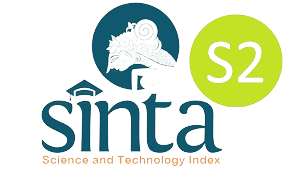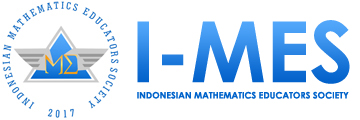Utilizing open-ended approach to enhance mathematical understanding among vocational high school students
DOI:
https://doi.org/10.29408/jel.v11i3.29711Keywords:
mathematical understanding skills, open-ended approach, vocational high schoolsAbstract
Mathematics learning in vocational high schools is still teacher-centred and relies on structured exercises, leaving little room for students to develop a conceptual understanding. The open-ended approach can be a solution because it allows students to explore various strategies for solving mathematical problems in depth. However, its implementation in vocational high schools remains limited. This study aimed to examine the effectiveness of the open-ended approach in improving the mathematical understanding of vocational high school students. A quasi-experimental design with a pretest-posttest control group design was used. The sample consisted of 72 students in the 11th-grade of Computer and Network Engineering, selected based on previously formed classes. Data were obtained through a mathematical understanding test that measured students' ability to identify, use, and apply the concepts of sequences and series to solve everyday problems. The test instrument consisted of three essay questions, with a maximum score of four for each item. As the data were not normally distributed, the Mann-Whitney U test analysis was used. The results showed that the increase in mathematical understanding of the group of students who received the open-ended approach was significantly better than that of the group who received direct learning.
References
Ary, D., Jacobs, L. C., & Sorensen, C. K. (2010). Introduction to Research in Education (8th ed). Canada: Wadsworth.
Abdissa, D. G., Duressa, G. F., Olkaba, T. T., & Feyissa, E. G. (2024). Effect of blended learning educational model on secondary students’ mathematical understanding. Problems of Education in the 21st Century, 82(5), 585–599. https://doi.org/10.33225/pec/24.82.585
Ali, D., Amir MZ, Z., Kusnadi, & Vebrianto, R. (2021). Literature review: Mathematical creative thinking ability, and students’ self-regulated learning to use an open-ended approach. Malikussaleh Journal of Mathematics Learning, 4(1), 52–61. https://doi.org/10.29103/mjml.v4i1.3095
Allie Michael, A., & Akinde, A. O. (2024). So many responses, so little time: A machine-learning approach to analyzing open-ended survey data. Assessment Update, 36(1), 4–5. https://doi.org/10.1002/au.30377
Anderson, R. C., Beghetto, R. A., Glăveanu, V., & Basu, M. (2023). Is curiosity killed by the CAT? A divergent, open-ended, and generative (DOG) approach to creativity assessment. Creativity Research Journal, 35(3), 380–395. https://doi.org/10.1080/10400419.2022.2157588
Artzt, K. (2024). Assessing student understanding with a book project. Mathematics Teacher: Learning and Teaching PK–12, 117(11), 836–842. https://doi.org/10.5951/MTLT.2024.0014
Borji, V., Surynková, P., Kuper, E., & Robová, J. (2025). Using contextual problems to develop preservice mathematics teachers' understanding of exponential and logarithmic concepts. International Journal of Mathematical Education in Science and Technology, 56(6), 1022–1052. https://doi.org/10.1080/0020739X.2024.2309284
Çitçi, A., & Kezer, F. (2024). Scoring open-ended items using the fuzzy TOPSIS method and comparing it with traditional approaches. International Journal of Assessment Tools in Education, 11(2), 406–423. https://doi.org/10.21449/ijate.1373629
Coetzer, T., Livingston, C., & Barnard, E. (2023). Using visual representations to enhance isiXhosa home language learners’ mathematical understanding. South African Journal of Childhood Education, 13(1), Article 1297. https://doi.org/10.4102/sajce.v13i1.1297
Creswell, J. W. (2012). Research design: Qualitative, quantitative, and mixed methods approaches (3rd ed.). Sage Publications.
Daas, R., Dijkstra, A. B., Karsten, S., & Dam, G. T. (2023). An open-ended approach to evaluating students’ citizenship competences: The use of rubrics. Education, Citizenship and Social Justice, 20(1), 3–18. https://doi.org/10.1177/17461979231186028
Devlin, B. L., Hornburg, C. B., & McNeil, N. M. (2023). Kindergarten predictors of formal understanding of mathematical equivalence in second grade. Developmental Psychology, 59(8), 1426–1439. https://doi.org/10.1037/dev0001559
Etyarisky, E., & Marsigit, M. (2022). The effectiveness of digital interactive media on mathematical conceptual understanding: A meta-analysis. Journal of Mathematics Education Research, 15(2), 45–60.
Heliawati, L., Afakillah, I. I., & Pursitasari, D. (2021). Creative problem-solving learning through open-ended experiment for students' understanding and scientific work using online learning. International Journal of Instruction, 14(4), 321–336. https://doi.org/10.29333/iji.2021.14419a
Hornburg, C. B., Devlin, B. L., & McNeil, N. M. (2022). Earlier understanding of mathematical equivalence in elementary school predicts greater algebra readiness in middle school. Journal of Educational Psychology, 114(3), 540–559. https://doi.org/10.1037/edu0000683
Huang, S., & DosAlmas, M. (2024). Reimagining mathematical understandings through an equity lens: How students demonstrate robust understandings in project-based classrooms. Interdisciplinary Journal of Problem-Based Learning, 18(1), 1–22. https://doi.org/10.14434/ijpbl.v18i1.36886
Jacobson, M. R., Whyte, C. E., & Azzam, T. (2018). Using crowdsourcing to code open-ended responses: A mixed methods approach. American Journal of Evaluation, 39(3), 413–429. https://doi.org/10.1177/1098214017717014
Junita, A., Zulkardi, & Darmawijoyo. (2022). Open-ended approach in improving students’ mathematical representation ability: A quasi-experimental study. International Journal of Instruction, 15(3), 767–786.
Khatin-Zadeh, O., Farsani, D., & Yazdani-Fazlabadi, B. (2022). Transforming dis-embodied mathematical representations into embodied representations, and vice versa: A two-way mechanism for understanding mathematics. Cogent Education, 9(1), Article 2154041. https://doi.org/10.1080/2331186X.2022.2154041
Mangarin, R. T., & Caballes, D. G. (2024). Barriers to mathematical comprehension among vocational high school students: A qualitative analysis. Journal of Vocational Education Studies, 7(1), 112–128.
Morris, E. B., Michael, J., & Sevier, J. (2022). College developmental mathematics students’ understanding of fraction operations. International Journal for Mathematics Teaching and Learning, 23(2), 22–39. https://doi.org/10.4256/ijmtl.v23i2.358
Organisation for Economic Co-operation and Development. (2020). PISA 2018 results: What students know and can do (Vol. I). OECD Publishing. https://doi.org/10.1787/5f07c754-en
Pamungkas, A. S., & Kowiyah, K. (2021). The impact of open-ended learning on elementary students’ mathematical problem-solving skills. Journal on Mathematics Education, 12(1), 145–160.
Pott, R. W. M., & Nortjé, S. (2021). The use of student question-posing in reactor design to encourage an open-ended approach to learning. European Journal of Engineering Education, 46(6), 874–888. https://doi.org/10.1080/03043797.2021.1923662
Rojo, M., Doabler, C. T., & Clarke, B. (2024). Number lines to support mathematical understanding. Intervention in School and Clinic, 59(3), 155–157. https://doi.org/10.1177/10534512231156877
Rotem, S. H., & Ayalon, M. (2024). Constructing coherency levels to understand connections among the noticing skills of pre-service mathematics teachers. Journal of Mathematics Teacher Education, 27(4), 579–605. https://doi.org/10.1007/s10857-023-09574-7
Rowlett, P., Graham, C., & Lawson-Perfect, C. (2025). Demonstration of a partially automated assessment approach to create an individualised, open-ended modelling worksheet. International Journal of Mathematical Education in Science and Technology, 56(4), 788–799. https://doi.org/10.1080/0020739X.2023.2289068
Sartono, N. (2021). Gender differences in vocational students’ mathematical reasoning: Does teaching method matter? Journal of Research in STEM Education, 5(2), 89–104.
Spitzer, M. W. H., Garcia, M. R., & Moeller, K. (2025). Basic mathematical skills and fraction understanding predict percentage understanding: Evidence from an intelligent tutoring system. British Journal of Educational Technology, 56(3), 1122–1147. https://doi.org/10.1111/bjet.13517
Susanto, A. (2016). Teori belajar dan pembelajaran di sekolah dasar (2nd ed.). Kencana.
Tambunan, L. O., Fauzi, A., & Sitompul, P. (2025). Pengaruh pendekatan open-ended berbasis etnomatematika terhadap kemampuan berpikir kreatif. Jurnal Cendekia: Jurnal Pendidikan Matematika, 9(2), 519–526. https://doi.org/10.31004/cendekia.v9i2.3934
Talafian, H., Lundsgaard, M., Mahmood, M. S., Kuo, E., & Stelzer, T. J. (2025). Teachers’ experiences with taking an open-ended approach in teaching labs in high school physics classes. Physical Review Physics Education Research, 21(1), Article 010140. https://doi.org/10.1103/PhysRevPhysEducRes.21.010140
Triet, L. V. M., Loc, N. P., & Ngan, N. N. T. (2024). Effect of GeoGebra-supported 5E learning model on students’ understanding of the area of a trapezium: A quasi-experimental study. Mathematics Teaching Research Journal, 16(6), 190–213.
Uegatani, Y., Otani, H., Shirakawa, S., & Ito, R. (2024). Real and illusionary difficulties in conceptual learning in mathematics: Comparison between constructivist and inferentialist perspectives. Mathematics Education Research Journal, 36(4), 895–915. https://doi.org/10.1007/s13394-023-00478-6
Weissman-Enzinger, N. M. (2024). Integrating ELA: Imagination and unlocking mathematical understanding. Voices from the Middle, 31(3), 30–33. https://doi.org/10.58680/vm202431330
Yao, X., & Manouchehri, A. (2020). Teacher interventions for advancing students’ mathematical understanding. Education Sciences, 10(6), Article 164. https://doi.org/10.3390/educsci10060164
Downloads
Published
How to Cite
Issue
Section
License
Copyright (c) 2025 Rusdian Rifai, Turmudi, Jarnawi Afgani Dahlan, Suhendra

This work is licensed under a Creative Commons Attribution-ShareAlike 4.0 International License.
Authors who publish with the Jurnal Elemen agree to the following terms:
- Authors retain copyright and grant the journal right of first publication with the work simultaneously licensed under Creative Commons Attribution-ShareAlike 4.0 International License (CC BY-SA 4.0).
- Authors are able to enter into separate, additional contractual arrangements for the distribution of the journal's published version of the work (e.g., post it to an institutional repository or publish it in a book), with an acknowledgment of its initial publication in this journal.
- Authors are permitted and encouraged to post their work online (e.g., in institutional repositories or on their website) prior to and during the submission process, as it can lead to productive exchanges, as well as earlier and greater citation of published work.
Jurnal Elemen is licensed under a Creative Commons Attribution-ShareAlike 4.0 International License





